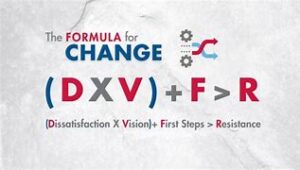You’ve had a great enquiry from a prospective client, exchanged emails and maybe even had a meeting and then… nothing. The meeting could have even gone really well, and you’re convinced they’ll become a client – but then they go cold. Is getting ghosted by prospects beginning to haunt you?
The good news is …
When I first started coaching in 2012, I did a lot of work with sales teams in the telecoms and recruitment sectors. These are people who spend their lives working sales pipelines through their CRMs. Professional full-time salespeople.
The thing that surprised me most was the proportion of their open prospects who over time turned cold and disappeared. It was far bigger than the percentage of people who said ‘yes’ – perhaps unsurprisingly – but more worryingly it was also way bigger than the percentage of people who said ‘no’.
The majority of their marketing efforts turned into ‘don’t knows’ and ‘no shows’
So, the good news is this isn’t just a ‘you’ problem – it’s the biggest challenge of full-time professional salespeople too.
Having said that, as the business owner it may not be your problem, but it is your job to get it fixed.
Why – exactly – does it happen?
Maybe you’re tempted to think this is a recent problem. Something to do with Millennials and Gen-Zers being scared of the phone. Or a general decline of common decency and manners.
Maybe that could be true – who knows? – but even if that has contributed to the problem it won’t help you fix it – or at the very least reduce it.
The easiest way to explain why it happens is through something called ‘The Formula for Change’.
This applies to sales – and it also applies to pretty much any decision-making process.

The formula expresses what needs to happen in order for ‘Change’ to happen – in this case, for a prospect to say ‘yes’.
That decision carries a level of Resistance – which is shown at the end. And the formula explains how to overcome that level of Resistance.
Clearly for small purchases – a Crème Egg by the till – the (my) level of Resistance is between small and zero.
For big decisions – and especially those where the prospect has minimal experience or skill – the level of Resistance is much, much higher.
If you’re being ghosted, it will predominantly be because*:
- The pain that your product or service addresses is not clear enough – to them.
- The excitement / upside caused by having your product or service is not compelling enough – to them.
- The buying process (First Steps and Next Steps) is clear and simple enough.
So, it’s not so much a case of them ‘going cold’, and more that they were not in fact as warm as you thought.
(* Assuming that you are essentially average or above in terms of likeability and trustworthiness.)
How can I fix it?
My pet peeve is people implying that there is ‘a’ solution to anything. Even with problems / challenges that are simple to understand there is rarely one solution. Business doesn’t generally respond well to magic bullets of any nature.
In reality we’d need to take a look at your product, prospects, sales process – and you yourself to get a clear idea of the factors at play.
But here are a few things to get you started.
-
Add 3 – 5 steps to your sales process.
The biggest mistake I see businesses make when I’m trying to buy stuff, is using a one-size-fits-all 3-step selling process. This will typically be a response to my enquiry, a meeting and then a quote. Maybe they’ll leave a brochure. In the minority of cases the business will follow up for an answer.
That’s fine for something routine – say fixing a pipe. But nowhere near enough for a bigger decision / commitment.
It takes time to build trust and confidence and the traditional sales process is nowhere near enough to do that properly.
Most people have the meeting waay too early. I simply don’t know (trust) them well enough to make a decision.
So I ‘go away and think about it’. And then I get distracted.
How many steps should you have for your product or service? That will depend on what you do but the quick answer is somewhere between 5 and 13, with most being between 5 and 7.
-
Ask great questions.
The ‘D’ and the ‘V’ in the formula are both emotions rather than logic. The majority of the businesses who pitch for work I need doing (at home or at work) use logic to sell to me.
It may be that my reasons for buying a product or service are what they hear every day – but in my little head I’m unique and I want to be treated as unique.
Questions uncover emotion, and the higher the emotion the greater the urgency – and the less likely I’ll be to ghost you.
The topic of what great questions to ask is one for another article, but Marcus Sheridan once shared the thought with me that great questions should have both ‘purpose’ and ‘progression’.
The other great benchmark is very simple: does it encourage them to talk about their favourite subject? (themselves).
-
Deal in advancements – and not continuations
In his bestselling book Spin Selling, Neil Rackham introduces the idea of differentiating between advancements and continuations.
A continuation is one of those where you feel like a pest or even worse, desperate.
This is where the metaphorical ‘can’ of the decision is continually being kicked down the road.
Everyone involved knows where it’ll end up but no one is willing to say it. These wild goose chases take up days and weeks of a salesperson’s life.
An advancement is where you agree a set action at a set time.
It’s where you find out what the real objections are and if appropriate, help them overcome them.
If this feels uncomfortable for you, just do it with good manners. You may think it’ll be jarring but it isn’t – genuine buyers will respond well to a genuine, polite request for clarity.
-
Follow Up – by phone.
This is the oldest one in the book – but that’s because it’s the best.
Salespeople are generally pretty poor at following up and by all accounts Brits struggle with this more than most.
You’ve put in the time, and so you’ve earned the right to ask (politely) for an answer.
If you remember to ask when the best time would be to call back for an answer while you’re actually still meeting with them, great things will happen.
It’s much more likely you’ll do it – especially if you remember to put it in your diary.
You’ll get more clients / customers.
You’ll get more ‘nos’ – which is way better than ‘don’t knows’.
And in the process, you’ll get some really useful feedback about what needs to change in the way you sell your product / service.
-
Be like Queen Elsa
James Newell of Clear Sales Message is a great sales coach, and one of his pearls of wisdom is “Don’t chase, replace.”
Having a load of ‘don’t knows’ in your pipeline is a distraction and is draining.
They hang around on your CRM way too long, acting more like some passive aggressive rebuke than sources of revenue or motivation.
If you’ve done everything you should and everything you can, let it go and focus on prospects who are probably a better fit for you and your business.
DiSC – the fly in the ointment of ‘sales process’ advice.
To add a layer of complexity, different people have different inherent levels of Resistance.
High Is and Ds are fast-paced and tend to make decisions quickly and easily. They’re not worried about getting stuff wrong and tend to have a higher natural tolerance of risk.
Sadly their ease of decision making means they are the most likely to change their minds.
High Cs need detail and accuracy. If there’s a mistake, they will spot it.
High Ss need more reassurance and empathy. They are the most likely to want a second meeting to make sure – and to want your guarantee.
If your sales process treats everyone the same, it’ll only be ideal for 25% of your prospects. It’ll be just about OK for 50% – and work very badly for 25%.
Not the best odds.
I’ve written about DiSC elsewhere but to harness this for your sales process really needs a conversation rather than an extra paragraph.
In conclusion
Most businesses I meet have a one-size-fits-all sales approach and as the old saying goes ‘average in, average out.’ For business owners in sales it’d be more accurate to say ‘average in, poor out’.
What that means is that you’ll likely have a Conversion Rate of meetings to clients of roughly 25%. (If you think it’s more, measure it for a while and see).
Most people get 3 quotes for any significant purchase. 1 of these is usually a non-starter.
So what’s happening is you’re winning one, your main competitor is winning one and the rest decide to ‘wait and see’.
Now ask yourself what converting 35% would mean for your business?
This isn’t a question of eliminating ‘ghosting’ – it’s as unavoidable as people saying ‘no’.
The challenge is to do everything you can to reduce it, because adding another 10% to your conversion rate is 10% more onto your revenue.
And that’s got to be worth your time.
Tim
P.S. If you’re ready to take action and you’d like to talk about your approach to sales, please do get in touch.



